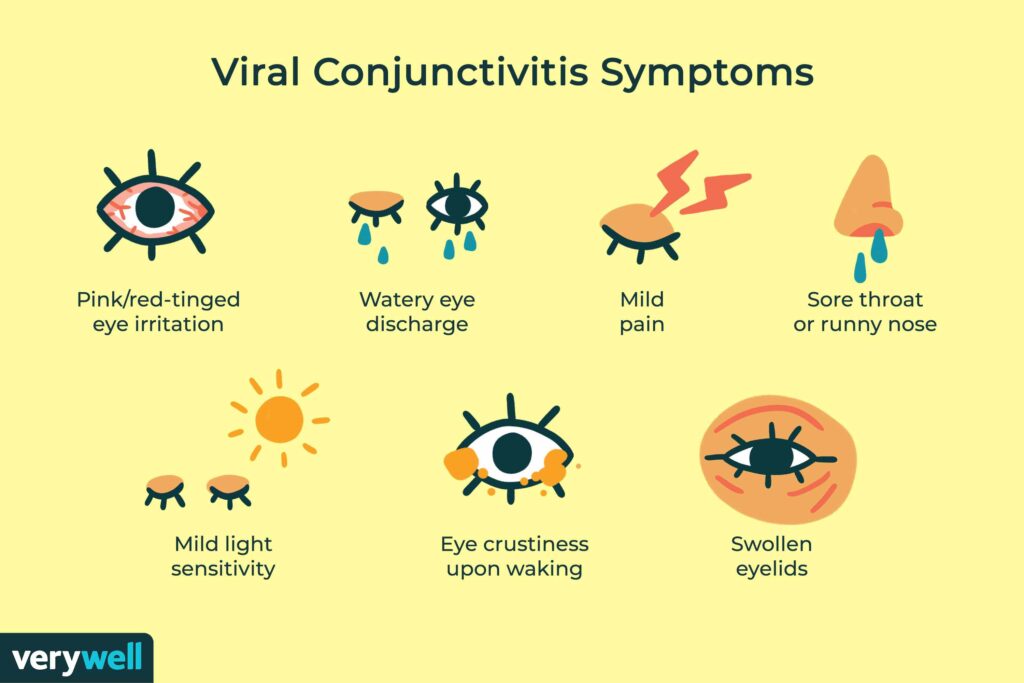
Conjuctivitis
First, your eye feels scratchy or uncomfortable. Next, you might notice redness, swelling, or discharge. They all add up to what doctors call conjunctivitis—though most people know it by the everyday name pink eye.
This common condition occurs when the conjunctiva—the thin, smooth layer of tissue lining the surface of your eye and the inside of your lid—becomes irritated or infected. Most often, this occurs due to viruses or bacteria.
“Conjunctivitis is basically like getting the common cold for your eye,” says Gene Kim, MD, associate professor of ophthalmology and visual science with McGovern Medical School at UTHealth in Houston and a member of the Robert Cizik Eye Clinic.
Pink eye symptoms are usually mild, but in severe cases, your vision can be affected—and threatened. Simple cases can usually be treated at home with artificial tears and cold compresses, says Radha Ram, MD, a pediatric ophthalmologist and adult strabismus surgeon with Texas Children’s Specialty Care in Austin. But in more severe cases, prescription eye drops or medications may be required.

The four origins of pink eye
Like many things in life, there are many roads to contracting pink eye. The first of which is called viral conjunctivitis. Viral conjunctivitis is exactly as it sounds, a virus that is easily transmitted from person to person. It is highly contagious and is usually caused by viruses such as adenoviruses.
Bacteria is a large contributor to many different infections; this includes bacterial conjunctivitis. This is the most common origin of pink eye that is common among both adults and children. There are quite a few types of bacteria that may be responsible for the infection. A few of these bacteria include Staphylococcus aureus, Streptococcus pneumoniae, Haemophilus influenzae, etc.
Everyone hates allergies. It just so happens that allergies would be responsible for the third origin of pink eye. Allergies may come from many different sources such as pollen, molds, animals, and even some medications. The good thing about allergic conjunctivitis is that it is not contagious like the other two origins mentioned. Usually, this type of pink eye only isn’t year-round and only occurs seasonally.
The fourth and final potential origin for pink eye is caused by irritants. An irritant could be anything from fumes to dust. Just about anything that bothers someone’s eyes could cause a reaction resulting in a case of conjunctivitis. The good news is that it isn’t contagious like viral and bacterial conjunctivitis.

Treatment
It’s important to stop wearing contact lenses while affected by conjunctivitis. It often resolves on its own, but treatment can speed the recovery process. Allergic conjunctivitis can be treated with antihistamines. Bacterial conjunctivitis can be treated with antibiotic eye drops.
At-home remedies
Be sure to talk to your doctor before you use any at-home remedies for pink eye.

A cold compress will soothe that annoying itchiness. When using a cold compress, be sure to use purified water to keep the area clean. You also need to re-sterilize your water and cloth each time you apply.

Chamomile is a natural herb often used for its soothing antibacterial properties. Simply brew a cup of chamomile tea, remove the tea bag and let it cool, then place it gently over your eye. Tip: lie down before applying the tea bag so that it doesn’t need to be held in place.

Baking soda whitens your teeth, but it also soothes an itch. Just dissolve one teaspoon of baking soda into warm, sterilized water and apply with a clean cotton swab.

Coconut oil (the organic variety is recommended) is another natural anti-bacterial home remedy. Apply it to the eyelid with a clean cotton ball before going to sleep and upon waking. This will help soothe the infection and itchiness.

Salt water in your tears can cleanse infection, so why not apply it by preparing a solution, using a teaspoon of salt dissolved in a cup of sterilized water? This creates some natural DIY eye-drops.
Sources:
Accelerated Urgent Care | October 26, 2021
www.health.com
